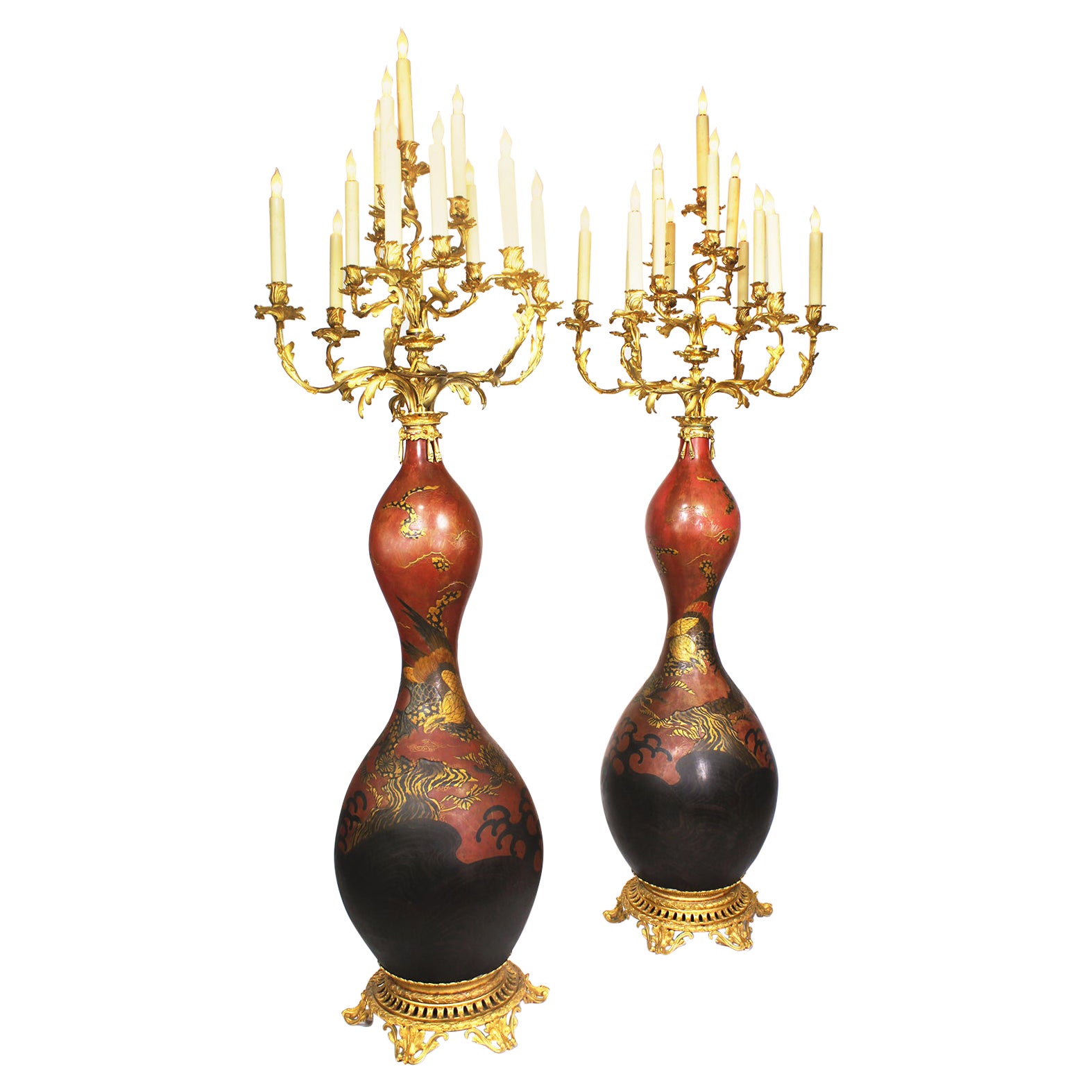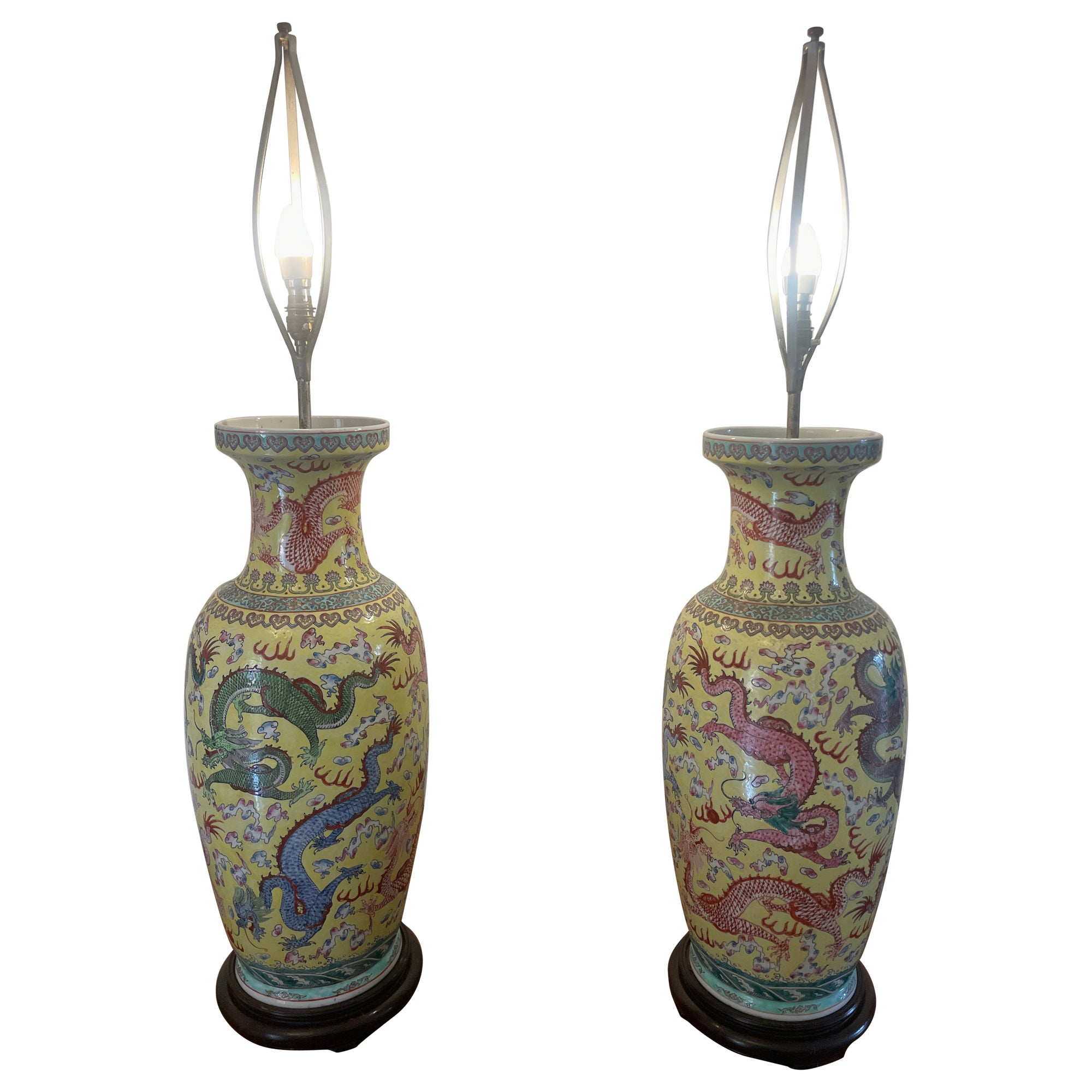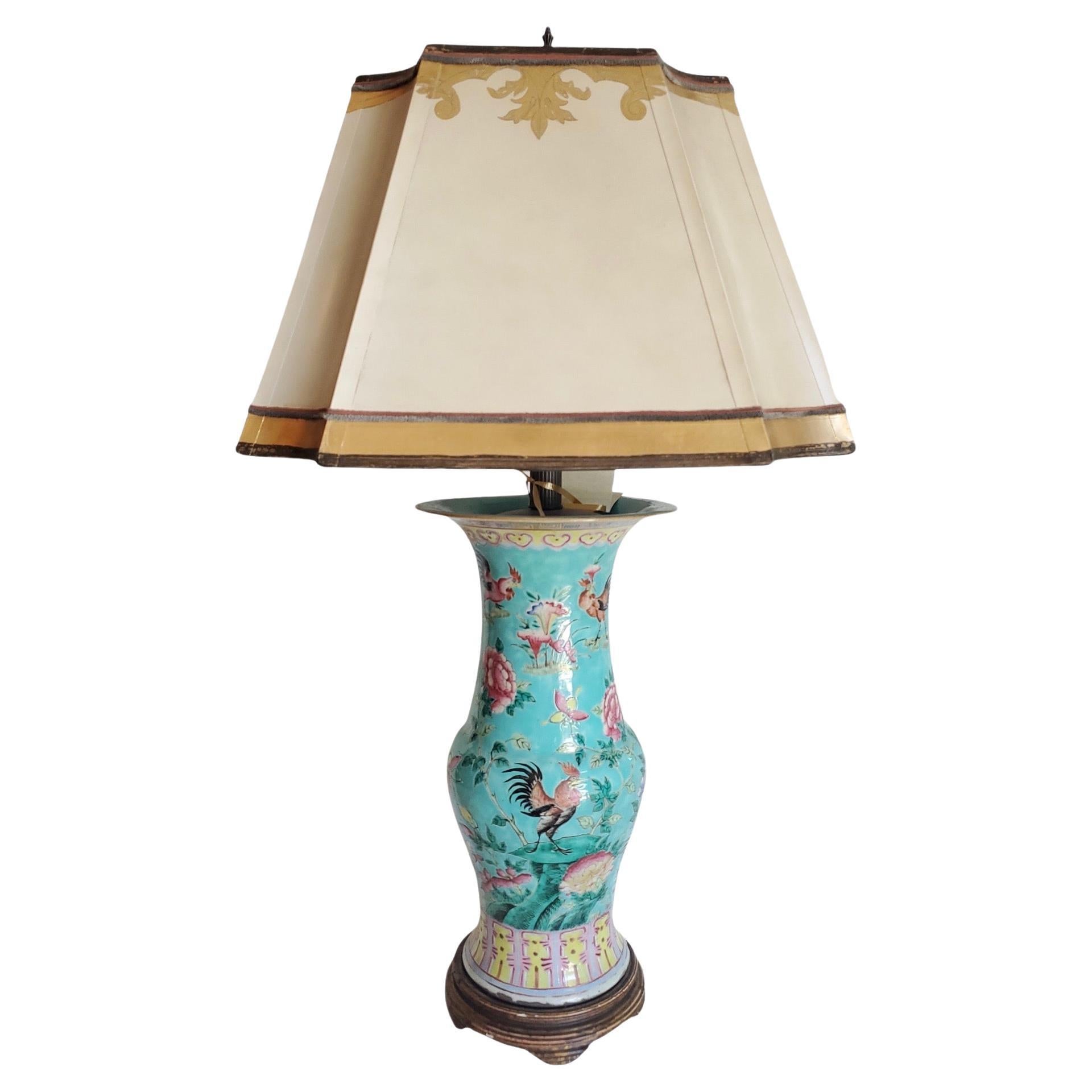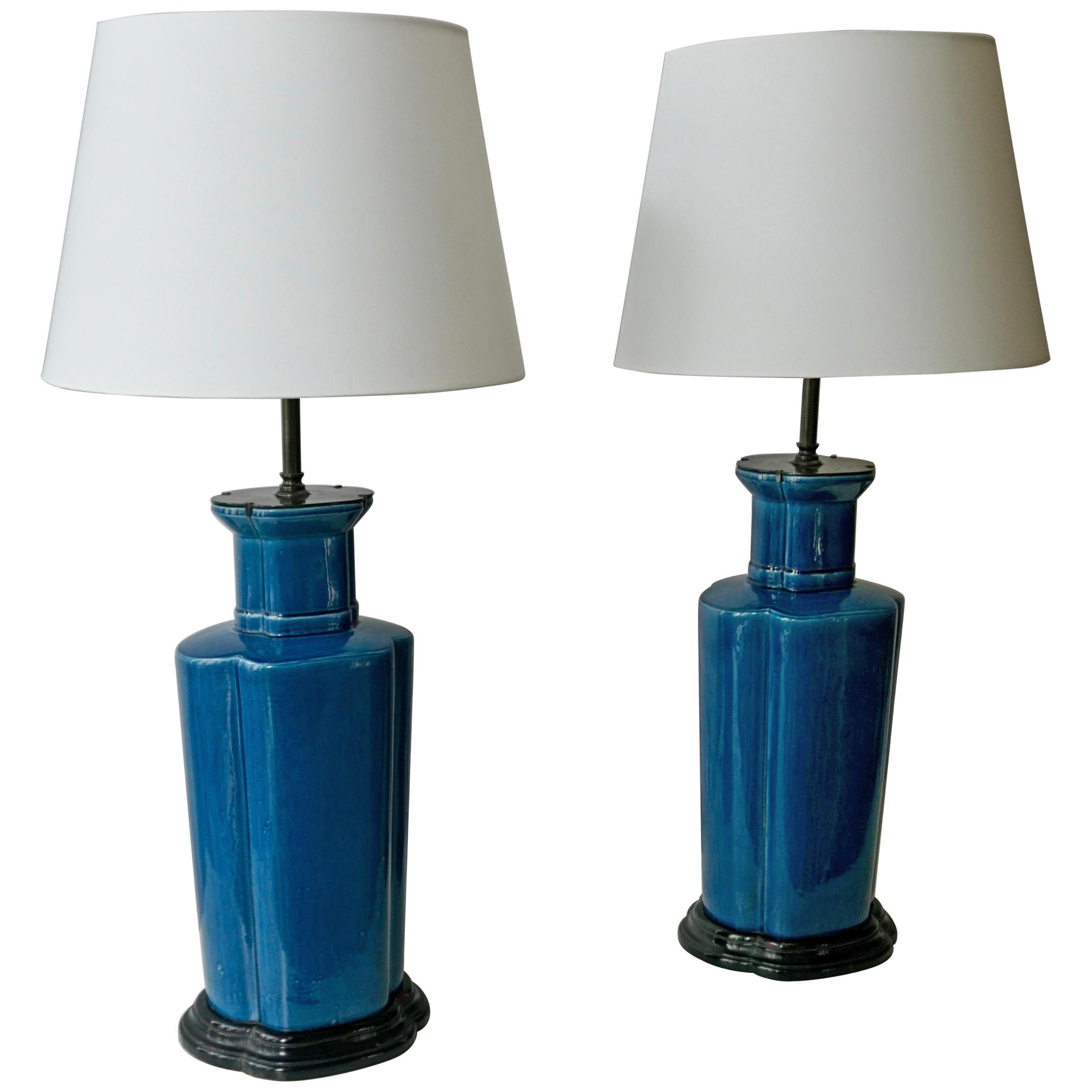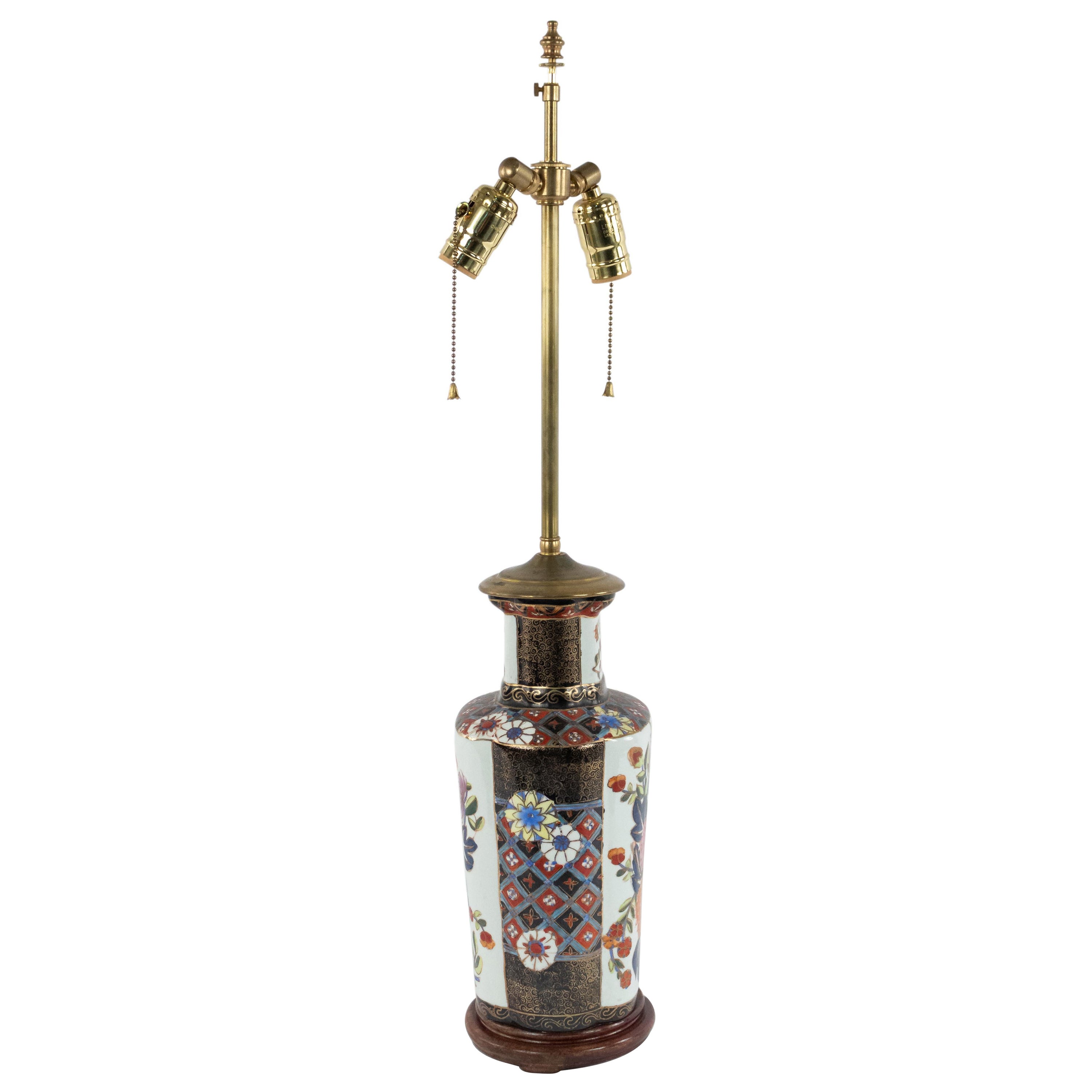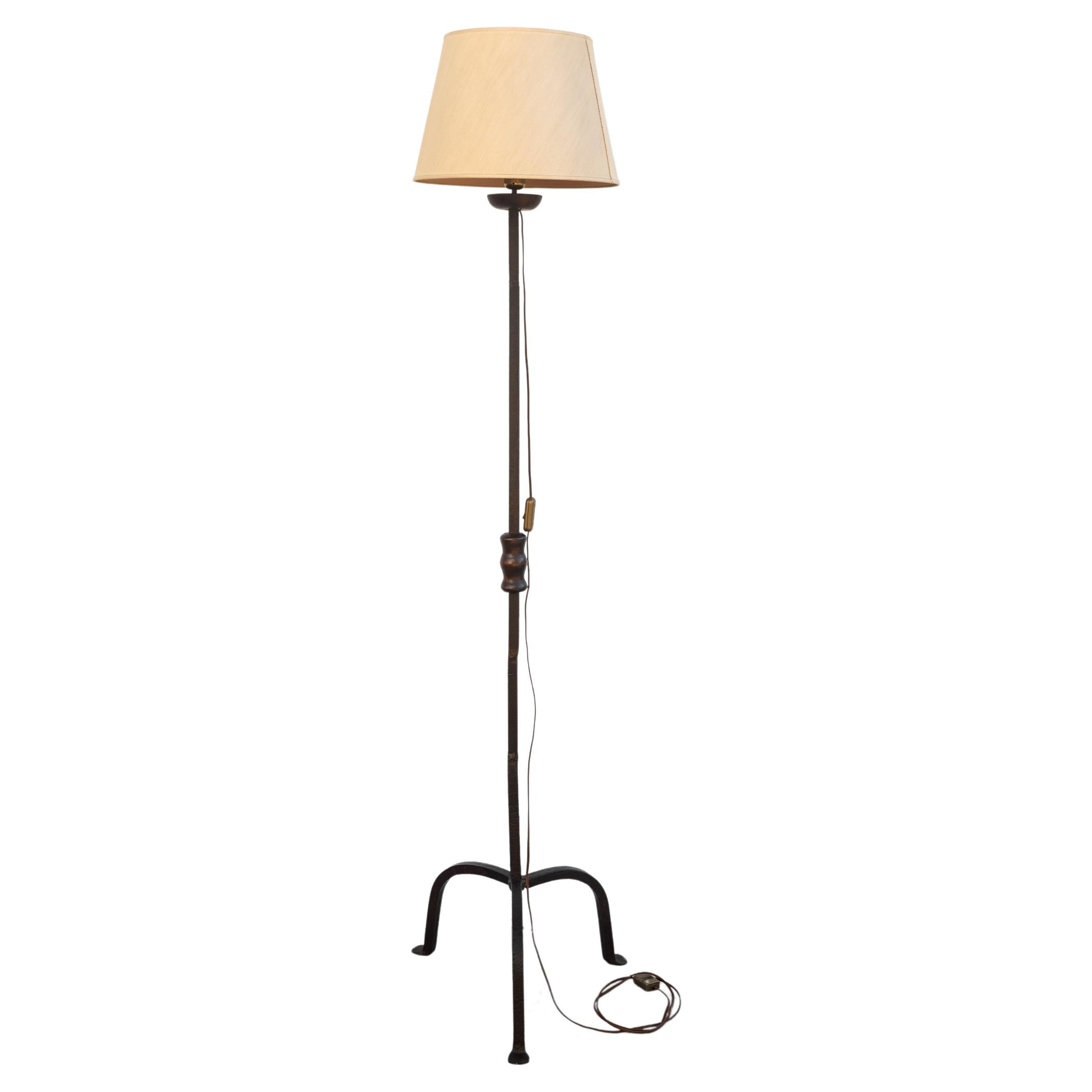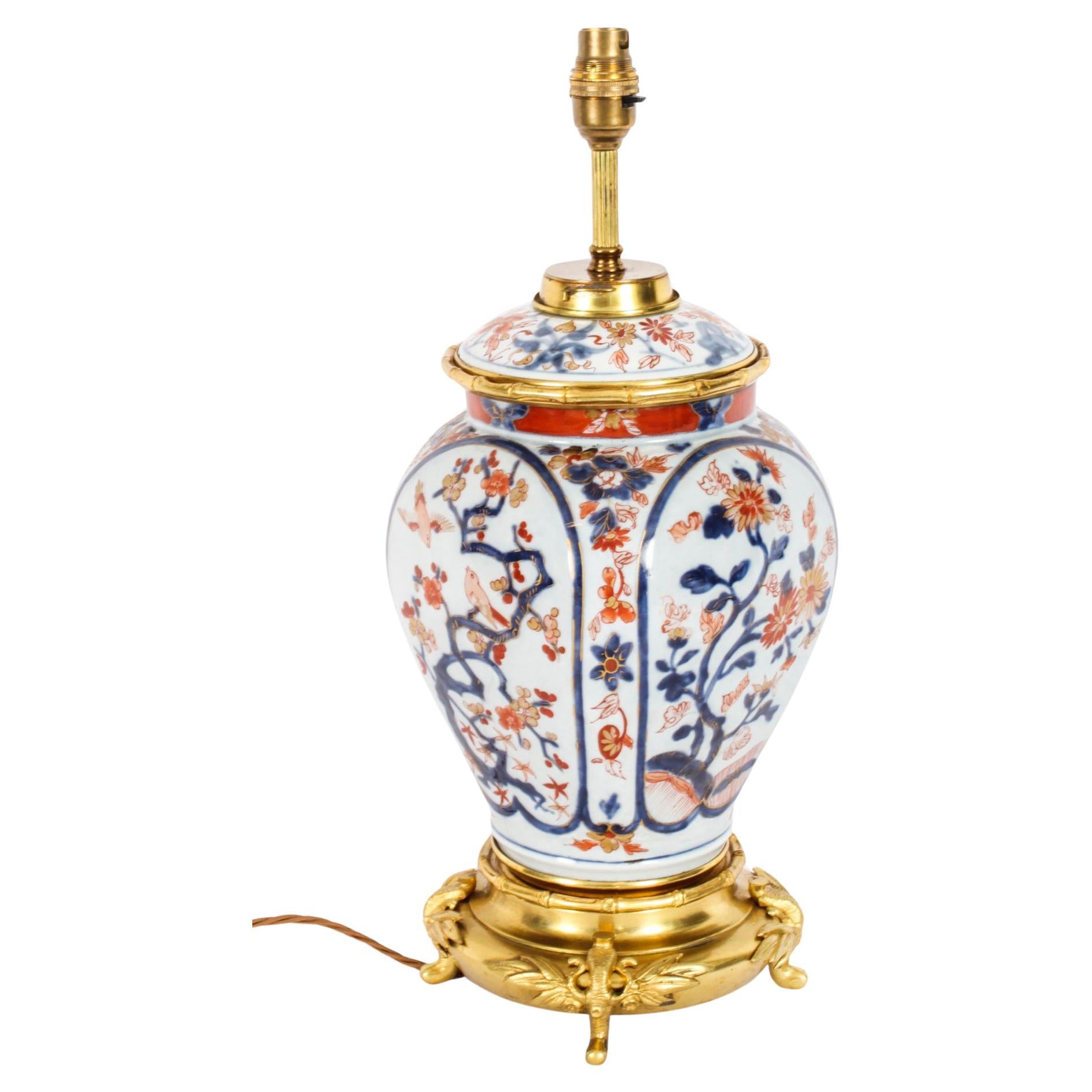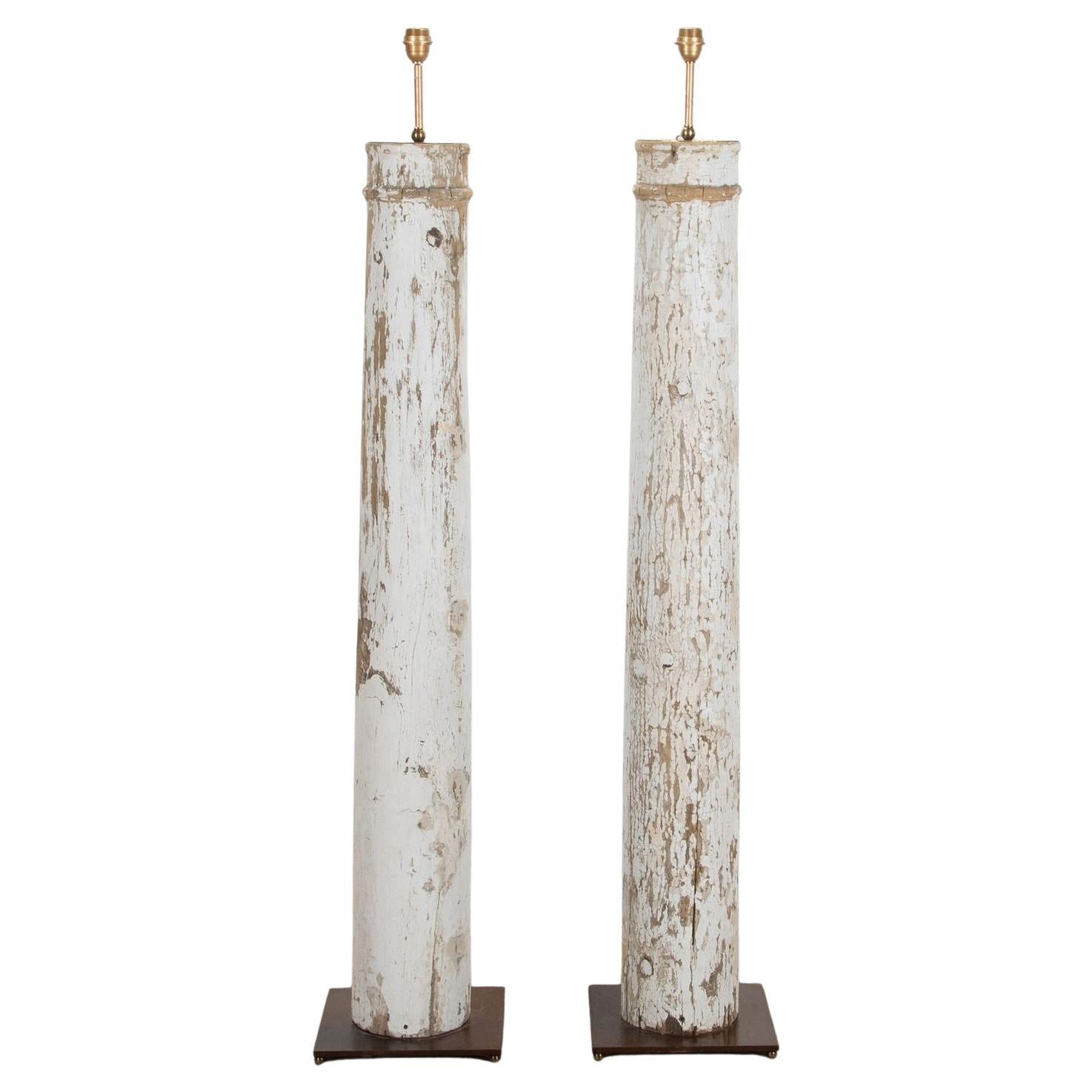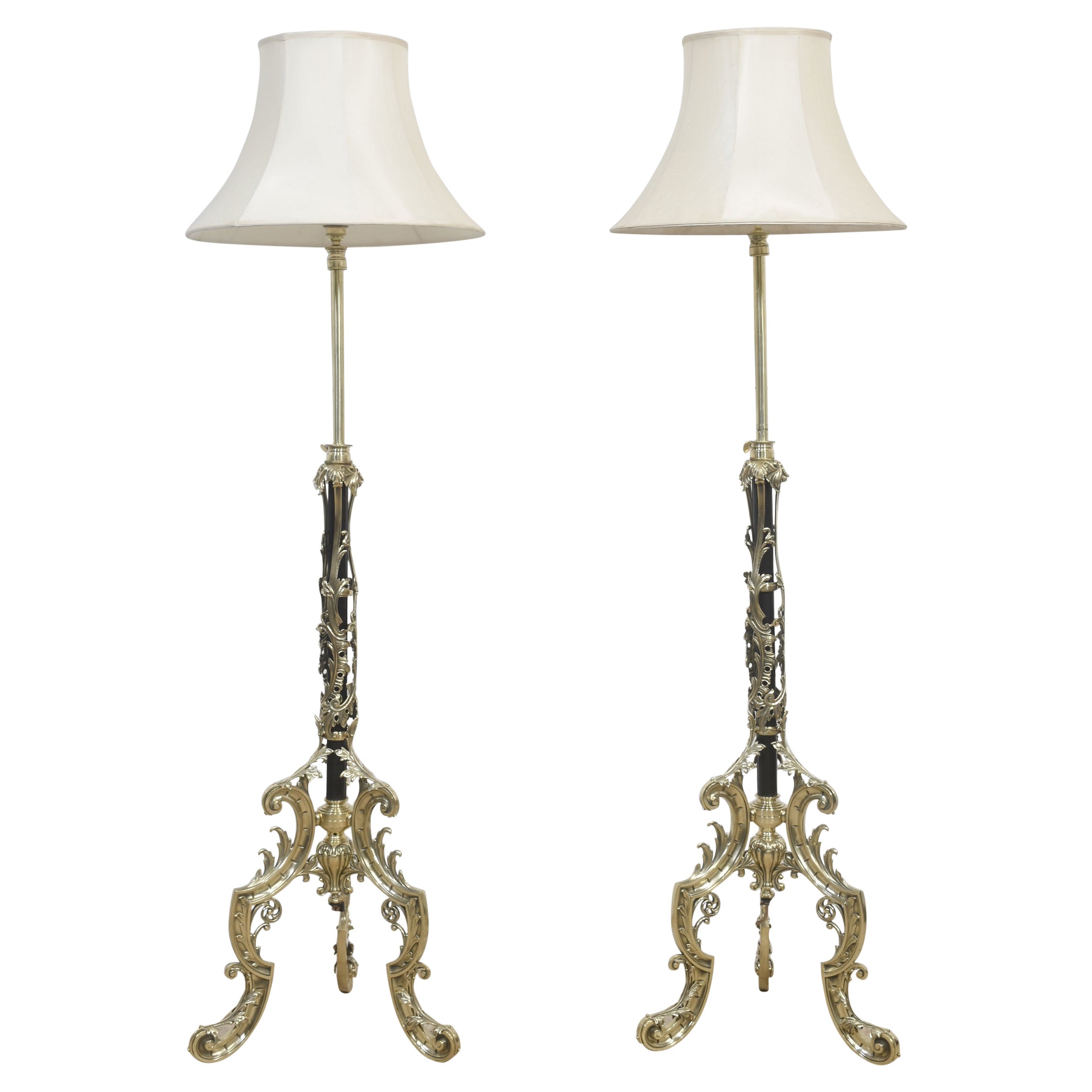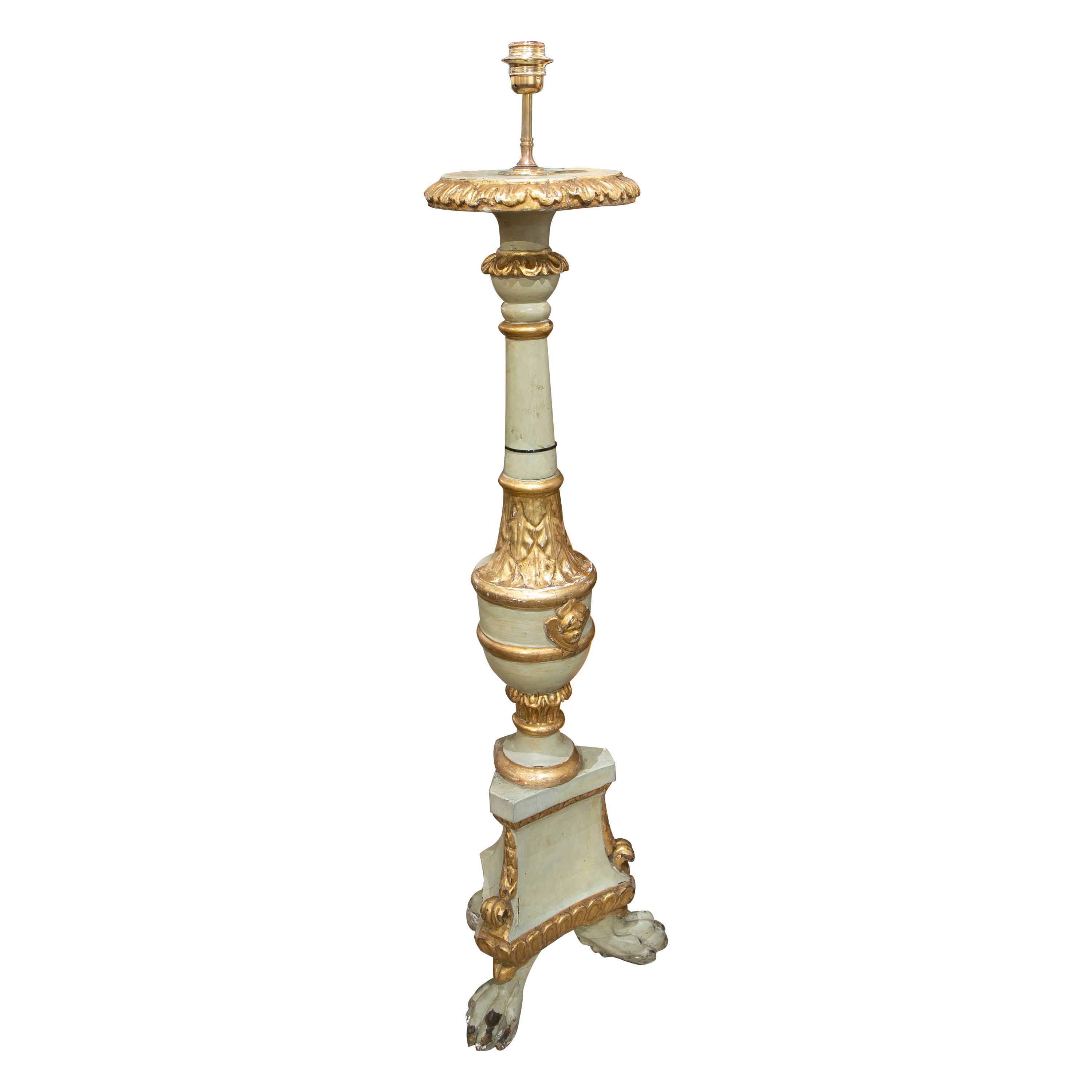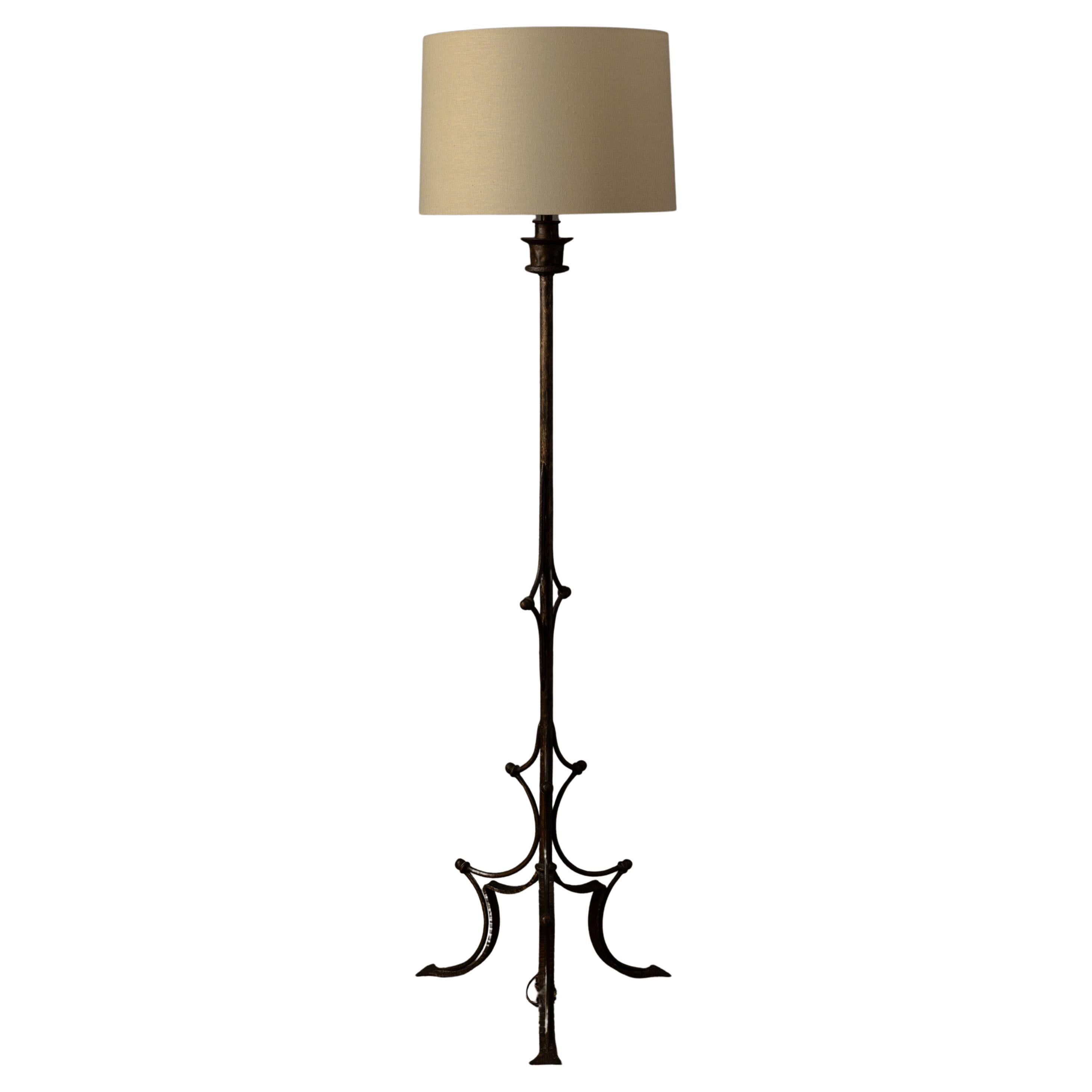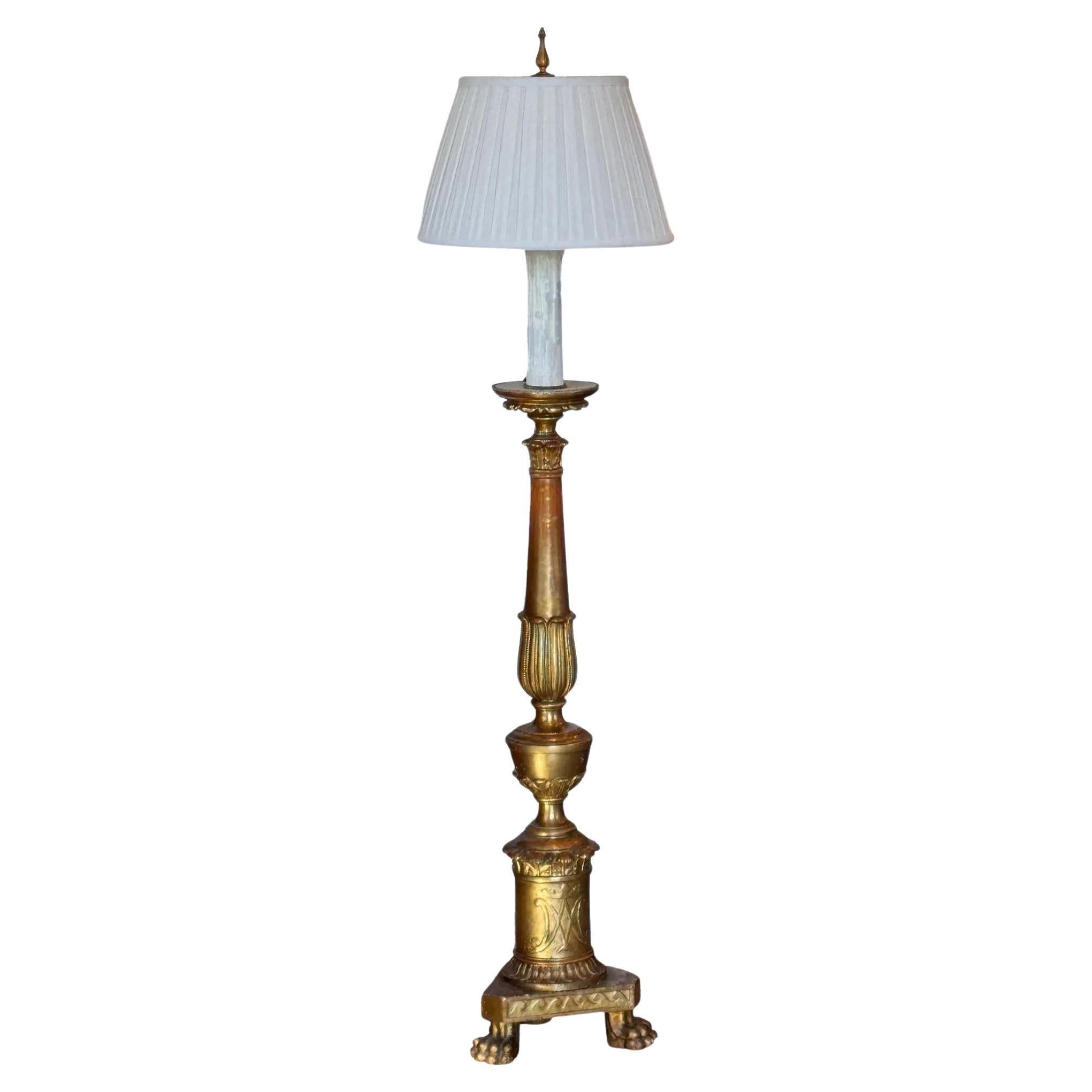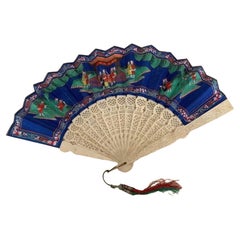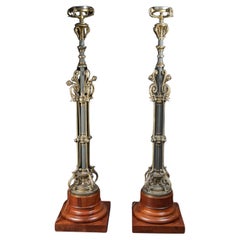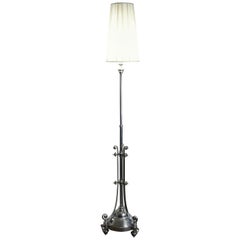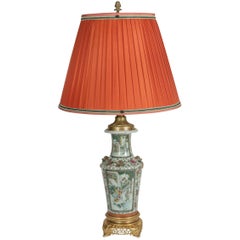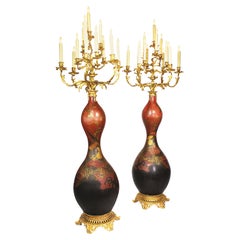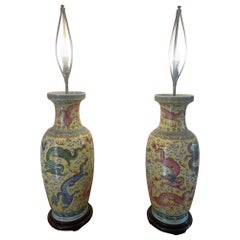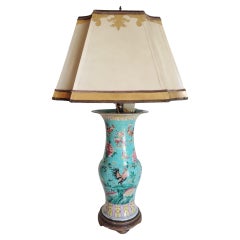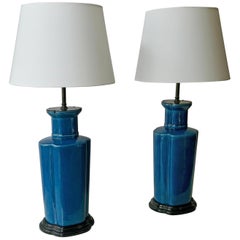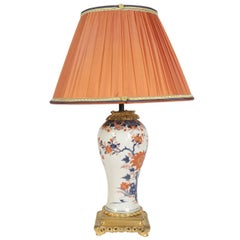
Single Imari China Porcelain Table Lamp of the 19th Century
View Similar Items
Want more images or videos?
Request additional images or videos from the seller
1 of 8
Single Imari China Porcelain Table Lamp of the 19th Century
About the Item
- Dimensions:Height: 22.45 in (57 cm)Diameter: 14.18 in (36 cm)
- Lampshade:Included
- Style:Chinese Export (Of the Period)
- Materials and Techniques:
- Place of Origin:
- Period:
- Date of Manufacture:1860-1890
- Condition:Wear consistent with age and use.
- Seller Location:Saint-Ouen, FR
- Reference Number:1stDibs: LU1530212495732
About the Seller
4.8
Platinum Seller
Premium sellers with a 4.7+ rating and 24-hour response times
Established in 2003
1stDibs seller since 2015
335 sales on 1stDibs
Typical response time: 1 hour
Authenticity Guarantee
In the unlikely event there’s an issue with an item’s authenticity, contact us within 1 year for a full refund. DetailsMoney-Back Guarantee
If your item is not as described, is damaged in transit, or does not arrive, contact us within 7 days for a full refund. Details24-Hour Cancellation
You have a 24-hour grace period in which to reconsider your purchase, with no questions asked.Vetted Professional Sellers
Our world-class sellers must adhere to strict standards for service and quality, maintaining the integrity of our listings.Price-Match Guarantee
If you find that a seller listed the same item for a lower price elsewhere, we’ll match it.Trusted Global Delivery
Our best-in-class carrier network provides specialized shipping options worldwide, including custom delivery.More From This Seller
View AllBeautiful Chinese fan of Canton of the 19th Century
Located in Saint-Ouen, FR
Beautiful Chinese fan of Canton of the 19th century in Bone, Paper and Silk.
Dimensions: H: 49cm, W: 28cm, D: 2cm.
Category
Antique 19th Century Chinese Chinese Export Sculptures and Carvings
Materials
Bone, Silk
Pair of Torchères, Napoleon III Period, 19th Century.
Located in Saint-Ouen, FR
Pair of torchères, Napoleon III period, 19th century.
Pair of bronze torchères with mahogany base, Napoleon III period, 19th century.
H: 188...
Category
Antique 19th Century French Napoleon III Floor Lamps
Materials
Bronze
Floor Standing Lamp in Chrome from the Beginning of the 20th Century
Located in Saint-Ouen, FR
Floor standing lamp in chrome from the beginning of the 20th century in the style of Louis XVI.
Category
20th Century French Louis XVI Floor Lamps
Materials
Metal
Importance Chinese Lamp from the Beginning of the 20th Century
Located in Saint-Ouen, FR
Importance Chinese lamp from the beginning of the 20th century mounted on gold gilt bronze.
H: 116cm, D: 60cm
Category
Early 20th Century Asian Chinese Export Table Lamps
Materials
Porcelain
Side Table of the Early 19th Century
Located in Saint-Ouen, FR
Side table of the early 19th century, base decorated with carved and gilded wooden shells.
Measures: H 61cm, D 47cm.
Category
Antique 19th Century European Rococo Side Tables
Materials
Wood
Pair of Table Lamps in Patinated Bronze, Porcelain and Granite, 19th Century.
Located in Saint-Ouen, FR
Pair of table lamps with cherubs in patinated bronze, porcelain and granite, 19th century, Napoleon III period.
A pair of 19th century Napoleon III period patinated bronze, porcelai...
Category
Antique 19th Century French Napoleon III Table Lamps
Materials
Granite, Bronze
You May Also Like
Pair 19th Century Japanese Imari Porcelain & Gilt-Bronze Torchere Candelabra
By Imari Porcelain
Located in Los Angeles, CA
A fine Pair of 19th century Japanese Imari Porcelain and French Gilt-Bronze Mounted Thirteen-Light Celadon Torchere Candelabra. The bottle-shaped Japonisme vases with a Royal red background, decorated with parcel-gilt and black soaring eagles in the hunt within a forestall scene. Each Vase fitted and surmounted with a French 19th century Louis XV Style 13-Light scrolled candelabrum and all raised on a circular pierced gilt-bronze plinth. circa: 1880.
Imari Porcelain (????) is the name for Japanese porcelain wares made in the town of Arita, in the former Hizen Province, northwestern Kyushu. They were exported to Europe extensively from the port of Imari, Saga, between the second half of the 17th century and the first half of the 18th century. The Japanese as well as Europeans called them Imari. In Japanese, these porcelains are also known as Arita-yaki (???). Imari or Arita porcelain has been continously produced up through the present day.
Characteristics
Though there are many types of Imari, Westerners' conception of Imari in the popular sense is associated only with a type of Imari produced and exported in large quantity in mid-17th century. This type is called Kinrande. Kinrande Imari is colored porcelain with cobalt blue underglaze and red and gold overglaze. The color combination was not seen in China at that time. Traditional Ming dynasty color porcelain used dominantly red and green, probably due to scarcity of gold in China, whereas gold was abundant in Japan in those days. The subject matter of Imari is diverse, ranging from foliage and flowers to people, scenery and abstractions. Some Imari design structures such as kraak style were adopted from China, but most designs were uniquely Japanese owing to the rich Japanese tradition of paintings and costume design. The porcelain has a gritty texture on the bases, where it is not covered by glaze. There is also blue and white Imari. Kakiemon style Imari is another type of Imari, but it tends to be categorized separately in Europe.
History
"Imari" was simply the trans-shipment port for Arita wares. It was the kilns at Arita which formed the heart of the Japanese porcelain industry.
Arita's kilns were set up in the 17th century, when kaolin was discovered in 1616 by the immigrant Korean potter, Yi Sam-pyeong (1579–1655). (He may also be known by the name, "Kanage Sambei".) Yi Sam-Pyeong, along with his extended family of 180 persons, left Korea on the offer of a privileged position in Japan. This decision was made after the occurrence of certain Japanese invasions of Korea. After Yi Sam-Pyeong's discovery, his kilns began to produce revised Korean-style blue and white porcelains, known as "Shoki-Imari".
In the mid-17th century there were also a lot of Chinese refugees in Northern Kyushu due to the turmoil on Chinese continent, and it is said one of them brought coloring technique to Arita. Thus Shoki-Imari developed into Ko-KutaniImari. Ko-Kutani was produced around 1650 for both export and domestic market. Blue and white porcelain continued to be produced and they are called Ai-Kutani. Ko-Kutani Imari for the export market usually adopted Chinese design structure such as kraak style, whereas Ai-Kutani for the domestic market were highly unique in design and are accordingly valued very much among collectors.
Ko-Kutani style evolved into Kakiemon style Imari, which was produced for about 50 years around 1700. Imari achieved its technical and aesthetic peak in Kakiemon style, and it dominated European market. Blue and white Kakiemon is called Ai-Kakiemon. Kakiemon style transformed into Kinrande in the 18th century. Kinrande used blue underglaze and red and gold overglaze, and later some other colors.
Imari began to be exported to Europe because the Chinese kilns at Ching-te-Chen were damaged in the political chaos and the new Qing dynasty government stopped trade in 1656–1684. Exports to Europe were made through the Dutch East India Company, but the designation "Imari Porcelain" in Europe connotes Arita wares of mostly Kinrande Imari.
Export of Imari to Europe stopped in mid-18th century when China began export to Europe again, since Imari was not able to compete against China due to high labor cost. By that time, however, both Imari and Kakiemon style were already so popular among Europeans, Chinese export porcelain copied both Imari and Kakiemon style, which is called Chinese Imari. At the same time, European kilns, such as Meisen also tried to copy Imari and Kakiemon.
Export of Imari surged again in late 19th century (Meiji era) when Japonism flourished in Europe. Thus in western world today, two kinds of Imari can...
Category
Antique 19th Century Japanese Japonisme Floor Lamps
Materials
Bronze, Ormolu
$24,850 Sale Price / set
49% Off
Large Pair of Antique 19th Century Chinese Porcelain Vase Lamps 105 x 24 cm
Located in Suffolk, GB
Large pair of antique 19th century Chinese porcelain vase lamps having magnificent hand painted dragons in wonderful red, blue and green colours and a wonderful yellow background col...
Category
Antique 19th Century Chinese Floor Lamps
Materials
Porcelain
19th Century Chinese Porcelain Lamp
Located in Los Angeles, CA
Beautifully painted 19th Century Chinese vessel converted to lamp. Wooden base. Custom parchment shade is 10" high x 16" wide.
Category
Antique 19th Century Chinese Chinese Export Table Lamps
Materials
Enamel
Pair of Chinese Porcelain Table Lamps
Located in Antwerp, BE
Two table lamps.
Height base 39 cm. Width 17 cm. Depth 16 cm.
Total height 70 cm.
Diameter shade 33 cm.
Shades shown are for demonstration purposes only.
Category
Mid-20th Century Italian Hollywood Regency Table Lamps
Materials
Brass
$2,317 / set
Chinese Style Porcelain Imari Table Lamp
Located in Queens, NY
Asian Chinese style porcelain table lamp with Imari style floral decoration on round wood base.
Category
20th Century Unknown Chinese Export Table Lamps
Materials
Porcelain, Wood
Forged iron floor lamp, second half of the 19th century
Located in Bastia Umbra, IT
Forged iron floor lamp, second half of the 19th century.
Beautiful wrought iron floor lamp with three supporting legs. The base that holds the lamp holder is made of turned wood. In...
Category
Antique Early 1800s Italian Floor Lamps
Materials
Iron
$1,390 Sale Price
20% Off
Recently Viewed
View AllMore Ways To Browse
Orange Chinese Lamp
Orange Asian Lamps
Imari 1860
Imari Gold Lamp
Antique Chinese Floor Lamps
Chinese Imari Lamp
Wood Floor Lamps With Table
Wrought Iron Floor Lamps
French Floor Lamp 1950s
Modern Floor Lamp With Large Shade
Unusual Floor Lamp
Vintage Steel Lamp Floor
Italian Glass Shade Floor Lamp
Floor Lamps With Reading Light
Chrome Floor Lamp Three
Midcentury Floor Sculpture
Green Glass Floor Lamp
French Tripod Lamp
